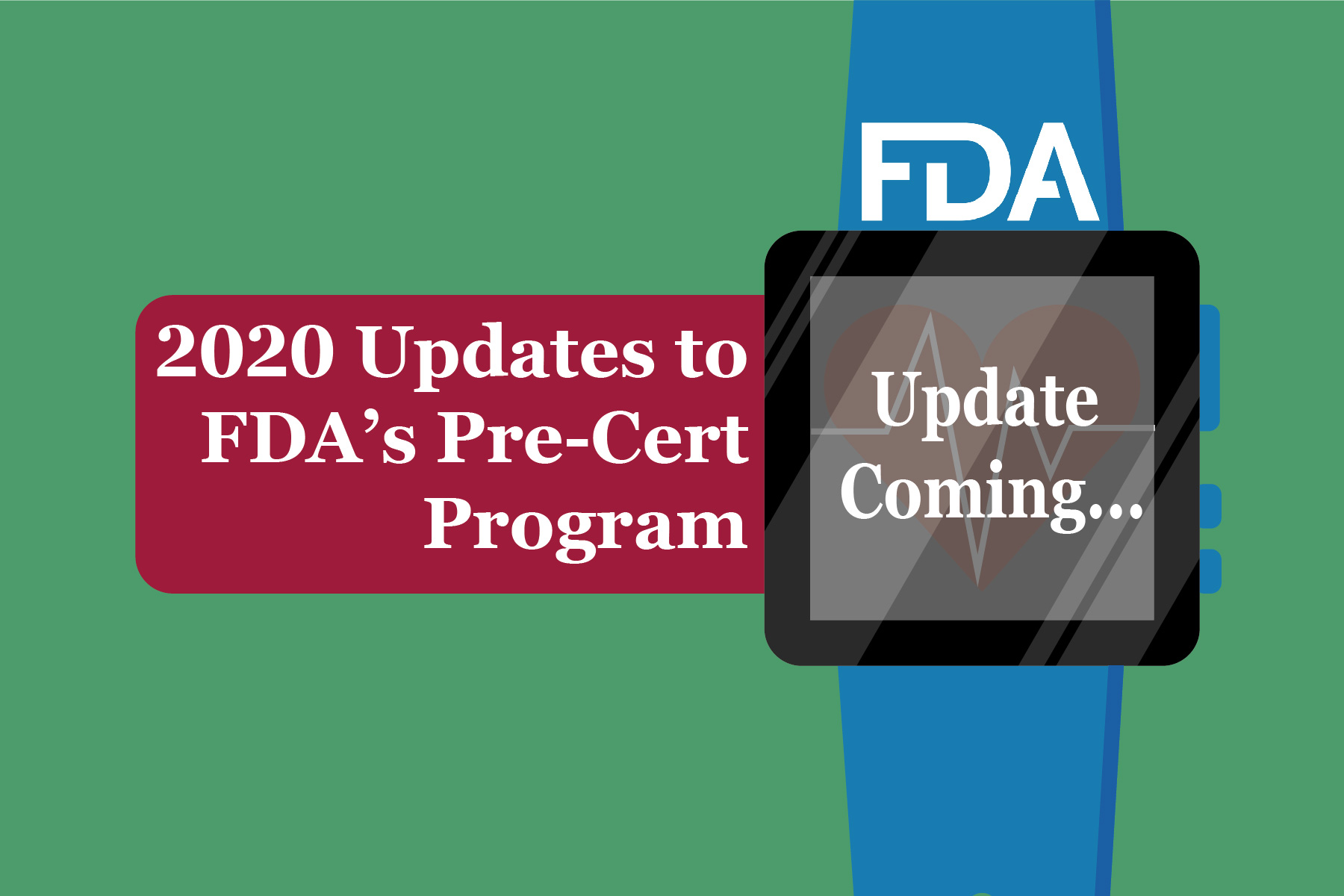On Monday, the FDA provided an update on its software precertification program known commonly as the Pre-Cert Program. This update comes over a year since the first working model of the pilot program was published by the agency, and nearly 3 years since the pilot was kicked off.1 With big-name participants like Apple, Fitbit, and Samsung being among the nine pilot participants, an update to this first of its kind program from the agency has been highly anticipated.
The pre-cert program is a continuous evaluation program aimed at developers of software as a medical device (SaMD). Essentially, through the pre-cert program, the FDA will examine the developer rather than the device. Companies must pass a certain criterion and “demonstrate a robust culture of quality and organizational excellence” to be certified, which will in turn allow the developer to go through a streamlined agency review of SaMD products; this is referred to as the FDA’s Total Product Lifecycle (TPLC) approach.2 Back in 2019, the agency released its first test plan to determine if it’s evaluation of developers through the pre-cert program coupled with the streamlined review process of their SaMD products can equate to more traditional clearance pathways (like the 510k) in terms of achieving FDA’s standard of safety and effectiveness.
This year’s update details what the agency’s next steps are in the continued mission to make this program a reality. The update details what will be involved with assessing development firms, the first step in the TPLC. This will be an organization-level analysis that looks first for that robust quality culture mentioned earlier, and then for a wealth of demonstrated evidence. The basis for this evaluation will include looking at product quality, clinical/cybersecurity responsibility, and a proactive culture to name a few.3
The next step in the TPLC is to conduct a streamlined review of the SaMD itself. This year’s update states that the agency is considering basing this step on the claims made for the product. This is big news for developers because it means that pre-certified firms would be able to market lower-risk devices with either an extremely simple agency review or no premarket review at all. Products that would still warrant a review can be expected to be examined for product performance (including real-world data), the clinical association between SaMD output and clinical condition, and safety measures.
Although this program is highly anticipated by the industry, it is still early in its development stage. Firms should not expect to see this pre-cert program come to full reality for at least a few more years until the agency thoroughly vets that it can protect public health. If you are developing an SaMD, EMMA International has a team of quality and regulatory experts that can help get your product through the FDA’s process. Give us a call at 248-987-4497 or email info@emmainternational.com to see how we can help.
1FDA (September 2020) Pre-Cert Pilot Program: Milestones and Next Steps retrieved on 09/15/2020 from: https://www.fda.gov/medical-devices/digital-health-software-precertification-pre-cert-program/precertification-pre-cert-pilot-program-milestones-and-next-steps
2FDA (September 2020) Digital Health Software Precertification Program retrieved on 09/15/2020 from: https://www.fda.gov/medical-devices/digital-health/digital-health-software-precertification-pre-cert-program
3FDA (September 2020) Developing the Software Precertification Program, Summary of Learnings and Ongoing Activities retrieved on 09/15/2020 from: https://www.fda.gov/media/142107/download






